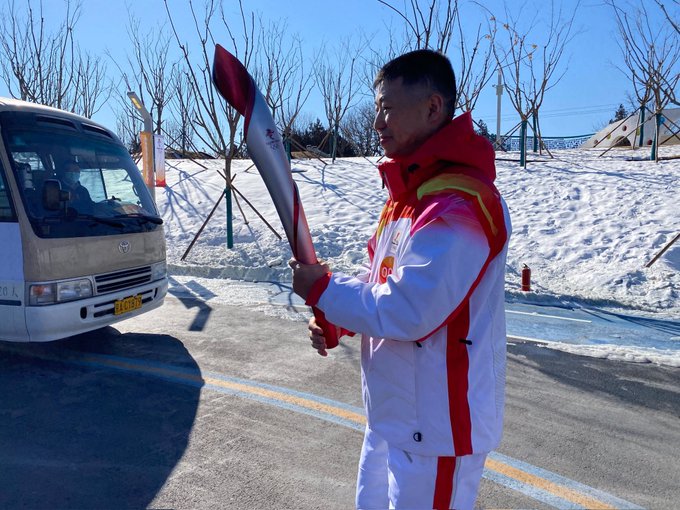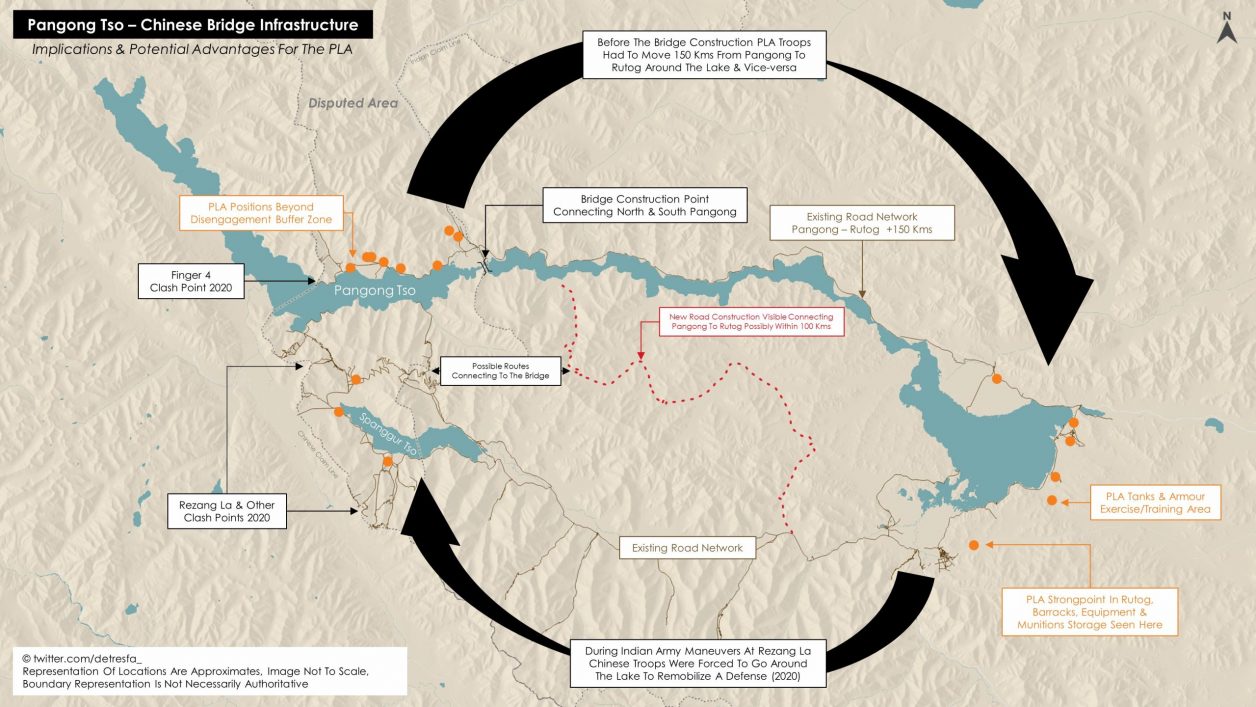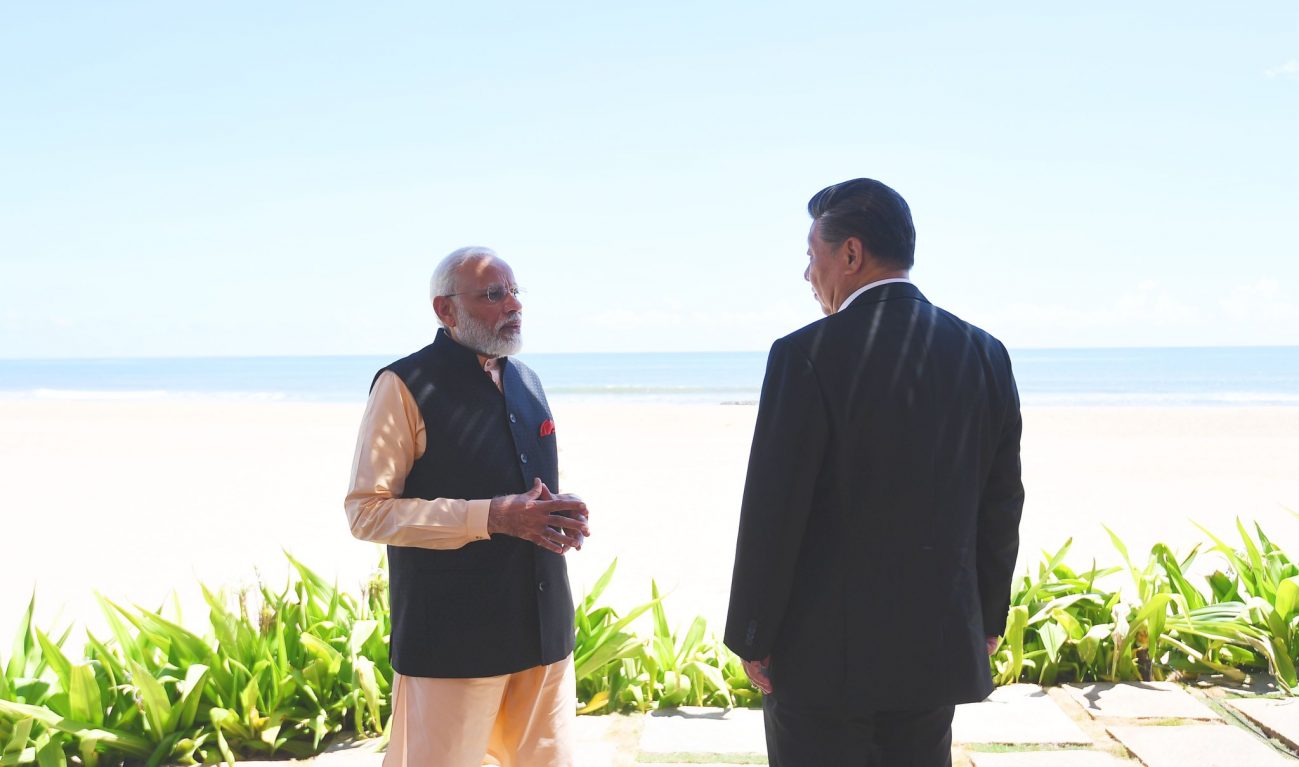China had remained tight-lipped about the casualties suffered by its troops in the June 2020 Galwan clash that left 20 Indian soldiers dead. About eight months later, when Beijing officially acknowledged the death of four PLA troops, it was believed to be a gross underestimation.
It has been almost 22 months since the two nuclear-armed neighbors got embroiled in a border conflict and there is no breakthrough in sight despite several rounds of talks. China continues to maintain an aggressive posture, further complicating the matter.
In January this year, PLA had purportedly unfurled the Chinese national flag in the Galwan valley. Going a step further, China has honored the PLA Regiment Commander involved in the 2020 clash. Qi Fabao was chosen by the Chinese government as the torchbearer for the Beijing Olympics that begin on February 3.

At a time when China is going overboard to push its propaganda on the border conflict, an investigative report by an Australian newspaper The Klaxon calls its bluff.
The report published on February 2, 2022, claims that China’s losses in the Galwan Valley conflict were significantly higher than previously reported as several PLA soldiers were believed to have drowned while crossing a fast-flowing river in the dark.
Klaxon report out citing Chinese anonymous bloggers publishing that PLA lost more troops in Galwan clash than China officially claims. 38 washed away in addition to the claimed dead.
Side note, see the ANI flash about the Chinese casualties. Getting closer winnie ? https://t.co/z5Lvaq44Hp pic.twitter.com/1wDQ3K8aYk— ishaan prakash (@ishaan_ANI) February 2, 2022
The Klaxon report is based on accounts of researchers and mainland Chinese bloggers who have declined to be named for security reasons, but their inputs appear to “shine an important light on the saga”, it said.
According to a source cited by the Australian daily, China lost 42 soldiers in the June 2020 Galwan Valley clash, at least nine times higher than its official admission of just four deaths.
This is not the first time that a foreign publication has disputed the PLA death toll provided by Beijing. In February last year, Russian state media agency TASS had pegged the number of Chinese casualties at 45. China was quick to rubbish the report, calling it an inflated figure. This, despite the fact Beijing maintains close ties with Moscow as both have common arch-rival — the US.
Further, an American intelligence-based assessment had placed the official figure of Chinese casualties at 35, slightly fewer than what Russian and Australian reports claimed but still significantly higher than the official Chinese numbers.
Unlike Russian and Australian reports, the American assessment had come soon after the clash. Quoting an intelligence officer, a separate report by New York Times claimed that at least 20-30 Chinese troops were killed in the June 2020 conflict.

Gawan Valley Clash – Investigation
Following the bloody border clash, which took place in sub-zero temperatures on the intervening night of June 15-16, India had said 20 of its soldiers lost their lives. But China has often refused to reveal the total number of casualties, according to Anthony Klan of Klaxon.
The Chinese state media almost entirely avoided covering the incident or its aftermath. Later, the Chinese side tried to give the impression that only one soldier, Junior Sergeant Wang Zhuoran, may have drowned. Wang was among the four PLA troops whose deaths were acknowledged by Beijing
However, Anthony’s report based on Weibo users’ accounts, categorically states that “at least 38 PLA (People’s Liberation Army) troops, along with Wang, were washed away and drowned that night…of which only Wang was declared among the four officially dead soldiers.”
“Comrades in arms kept slipping and being rushed downstream,” the report said, adding, “After the incident, the bodies of the soldiers were first taken to Shiquanhe Martyr Cemetery, followed by local ceremonies at the local towns of the killed soldiers.”
The report also cited a Weibo user who apparently served in the area. According to the user, the Chinese army has changed the status quo by building infrastructure in the buffer zone and has been attempting to increase its patrolling limits within the buffer zone since April 2020.
“PLA did not adhere to its promise…and instead of dismantling its own infrastructure as agreed upon, secretly dismantled the river crossing bridge constructed by the Indian army,” said the report.

The report also claims that Beijing went to “extreme lengths to silence discussion about the battle” and in particular, any “discussion about the true number of Chinese casualties”.
While it is not possible to independently verify the claims made by the Australian investigation report, it has certainly triggered a fresh debate on the Galwan episode globally.
China’s Official Estimate Found Few Takers
Last February, Indian Army’s former General Officer Commanding-in-Chief of the Northern Command that is responsible for the Line of Actual Control had said in an interview to CNN-News 18, “I don’t want to make an estimate, but when the incident happened, we were able to count a large number of casualties, which were being picked up on stretchers and taken back. More than 60, actually, but whether they were fatal or non-fatal, we can’t say with authority so I will not give a figure.”
While the Indian government or the Army has not officially given any count of the Chinese casualties, expert opinions and people familiar with the Galwan topography suggest that China’s official figure could be a gross underestimation.
According to the displacement of ambulances and helicopters on the Chinese side, the number of casualties could range between 16 and 96. It is impossible, however, to say how many of these resulted in fatalities, according to Abhijit Iyer-Mitra, a defense economist and Senior Fellow at the New Delhi-based Institute of Peace and Conflict Studies.
Writing for Money Control, Iyer Mitra said, “For India, evacuation of casualties is a fairly simple process involving a 5-kilometer pullback to the Shyok Valley, which itself is 1.5-kilometer wide at this spot allowing large helicopters to land. Even on the rough road this would take 15-30 minutes to reach.”
“However, on the Chinese side, the closest evacuation point is 39 kilometers, as the crow flies (45 kilometers by road) and the nearest heli-strip is about 70 kilometers away. This would involve a grueling drive of several hours on extremely winding mountain roads, before medical treatment is available and from there on a relatively straight road till a heli-strip for evacuation. This means we are looking at close to a 2-hour delay in critical treatment”, he added.
In the aftermath of the clash, during various levels of talks with India, Chinese authorities had given inconsistent figures for their Galwan casualties at various points in time, unofficially, according to sources in the defense and security establishment.
The statistics, which were exchanged informally, particularly during break-time chats during dialogue sessions, ranged from 5 to 14, despite China publicly accepting only four deaths so far.
Here, a large number of PLA troops seen retreating from the frontline in Pangong. pic.twitter.com/lamjXDYZ5g
— Manu Pubby (@manupubby) February 16, 2021
Further, the Chinese government had imprisoned about half a dozen people for questioning the government on the number of casualties in the clash with India, calling it an “insult to the martyrs”, as previously reported by The Hindu.
China’s hounding of its journalists, bloggers and activists who dared to question the establishment have added to the suspicion regarding the official estimates.
In China, the official figures can be divulged only with permission from the Chairman of the Central Military Commission (CMC), which in this case, is President Xi Jinping. There is no one else who can give the accurate figure except Xi.

Srikanth Kondapalli, Professor in Chinese Studies, Centre for East Asian Studies, Jawaharlal Nehru University, New Delhi, told The EurAsian Times, “It has not been China to divulge the number of casualties that it faces. The previous chairmen of the CMC never indulged in providing figures. In the 1950 Korean War, the Chinese suffered about a million casualties out of the total 8 million; in the Indo-China war of 1962, they suffered 1700 casualties as informed by the then-Defense Minister of India Y.D Chavan; in the Vietnam war, they allegedly suffered about a 55,000 casualties.”
“The one thing common about all these wars is that none of these figures by officially provided or even accepted by China. So going by that tradition, it’s not in Chinese nature to give accurate figures. It’s futile to even expect that Xi’s figures could be accurate,” Prof. Kondapalli added.
According to another China expert, who spoke on the condition of anonymity, “The figure could actually be as high as 128 if you take all factors into consideration. It’s already in the public domain that the Chinese had come prepared with sharp and lethal objects on the day the clashes took place.
On the other hand, the troops led by Colonel Satish Babu were unarmed. It looks very evident that the clash was pre-planned as it was President Xi Jinping’s birthday on 15th June. Quite possibly it was a birthday gift to Xi Jinping from the PLA army. Indian Army was expectedly caught unaware and unprepared for a major planned confrontation.
Reports have suggested that the PLA troops that were previously stationed there and familiar to Indian soldiers (at the friction point) were changed overnight, catching the Indian Commanding Officer (CO) and his men totally off guard. Probably, the Chinese had brought special armed units for the planned assault.
Once the PLA killed the Indian CO, a father-like figure to the troops, his men went berserk and faced the PLA troops in hand-to-hand combat. The temperature that night is said to be minus six. It’s anyone’s guess that the PLA troops that fell in the gushing river (as even the Australian report says), couldn’t have survived.”
- Contact the author at sakshi.tiwari9555@gmail.com
- Follow EurAsian Times on Google News




